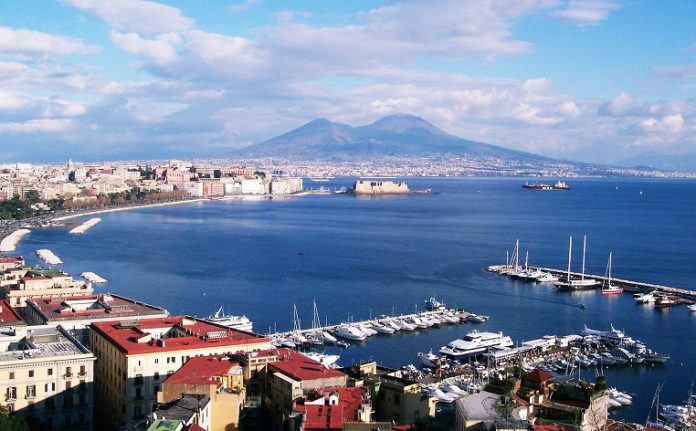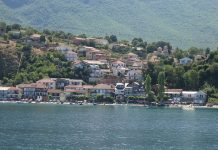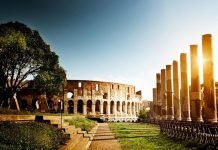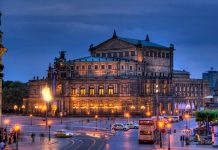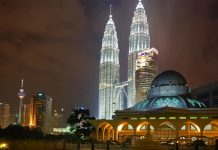Naples is the capital city of the region of Campania, Italy. It is one of the oldest inhabited cites on earth. Greek settlements were established in the area in the second millennium BC. Naples is the third most populated city in Italy, behind Rome and Milan.
The city is located on the West Shores of Italy, near the Gulf of Naples. It rests between two famous volcano’s, Mount Vesuvius and the Campi Flegrei Range. It would be most desirable for the tourist to climb Mount Vesuvius and guides are readily available. The view from the summit overlooking the Bay of Naples is truly stunning.
The Apostles Peter and Paul are said to have preached here in Naples, as Christianity began to spread its wings. The patron saint of the city, Januarius received martyrdom here during the fourth century A.D.
After the fall of the Western Roman Empire, the influence of Naples remained, as it was the capital of the Kingdom of Naples between the years of 1282 and 1816. After this period it united with Sicily and became the capital of the Two Sicily’s, until Italy was unified in 1861.
Naples was the most heavily bombed city during World War II, more than any other Italian city, but was successfully reconstructed after the war. Since then Naples has developed into a thriving tourist and business district. It is a leader in transportation in Europe, and has high-speed rail connections to Rome and Salerno. Many major European companies are headquartered in Naples; however the city is famous as a centre for art, history culture and tourism.
The Port of Naples is one of the most significant in all Europe, and has the second highest flow of passengers in the world, second only to Hong Kong.
The concept of pizza originated in Naples, and also various forms of musical expression are native to Naples, especially the invention of the mandolin and the romantic guitar and various forms of traditional dance.
The 2,800 year history of the city has left many historical buildings, including monuments, medieval castles and interesting ruins for the tourist to enjoy. Baroque, Medieval, and Renaissance styles of architecture are the dominant forms.
There are 448 historical churches here, which cause Naples to be essentially the most Catholic Municipalities in the world, with the greatest number of places of worship. Naples is home to a great many castles and a wealth of historic museums. A visit to the Castel Nuovo should not be missed’ as it is one of the city’s premier attractions. It was built during the reign of Charles I, the King of Naples as his palace, and has a rich history.
The National Archaeological Museum in Naples is one of the cities foremost museums, and exhibits one of the most complete collections of artefacts of the Roman Empire, dating back thousands of years. The treasures on view are truly breath-taking.
The seat of the Archdiocese of Naples is of course, in Naples. This cathedral is the main place of worship in the city, and hosts yearly on September 19th, the Miracle of St. Januarius, the patron saint of the city. The miracle, which is observed by thousands of witnesses, is the dried blood of Januarius, said to turn to liquid, when held close to the holy relics that are purported to be part of his body.
Underneath the city are numerous caves and tunnels, the result of mining over many centuries. Many of these tunnels can be visited. In addition to this, there are also catacombs all over the city which may also be explored. During World War II these tunnels and catacombs were used as shelters from the bombings that took place here.
The Botanical Garden of Naples was founded in 1807 by Giuseppe Bonaparte and sports over 25,000 varieties of vegetation that represents over 10,000 species of plants.
Naples is widely known as one of the top tourist destinations in Europe, and tourists began coming to the city in the 18th century, to view its many attractions and scenery, including the panoramic Bay of Naples.
Naples is well known for its cuisine and wine, having been influenced by many cultures including the French, Spanish and the Greek. The city is especially noted for its seafood, pizza and pasta dishes.
Naples has, in addition to its cultural and historical sites, an amazing array of accommodation, restaurants and bars, for the more accomplished tourist. In addition to the astounding number of restaurants and hotels, there are golfing excursions, lake trips, spas and luxurious resorts available nearby. Do not overlook a trip to the Emerald Grotto.
There are amazing opportunities for people who enjoy sports and similar activities. The many ports and marinas offer a large variety of swimming and sailing. Hydrofoil trips to the nearby islands, such as the Isle of Capri, offer majestic views never to be forgotten. Also whilst holidaying in Naples or the surrounding area, it is possible to visit Pompeii and/or Herculaneum which were buried by the eruption of Mount Vesuvius thousands of years ago, where these towns are spectacularly frozen in time.
There is no doubt that a holiday to Naples will be an experience of a lifetime. The historic and cultural involvement is enough to fulfil a wonderful sense of the past. Your taste buds will be tickled by the wonderful restaurants and cafes and the locals are extremely hospitable and inviting. There is no more beautiful spot on earth than Naples and the surrounding area. Set by the sea, one of the most ancient cities in the world has never lost its charm and majesty.

